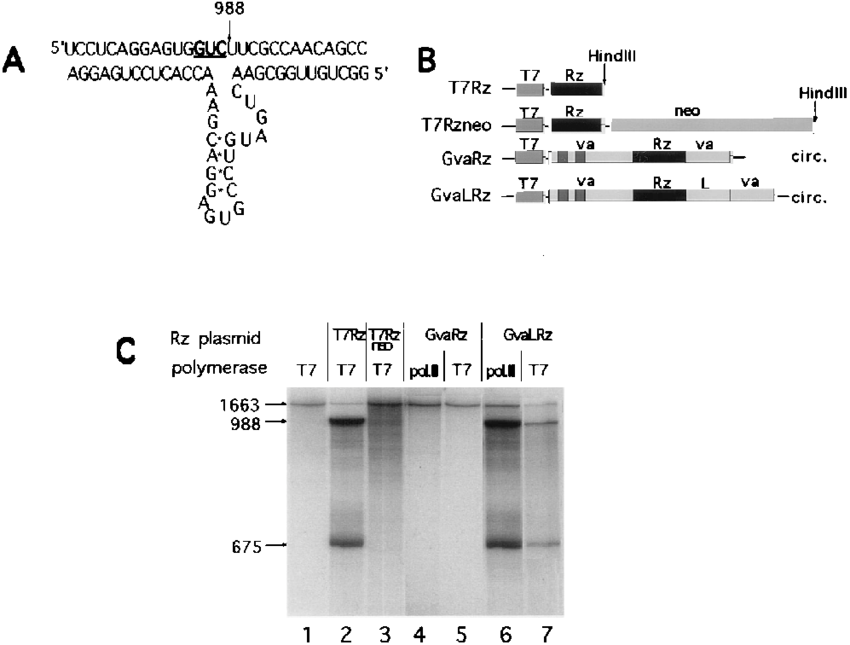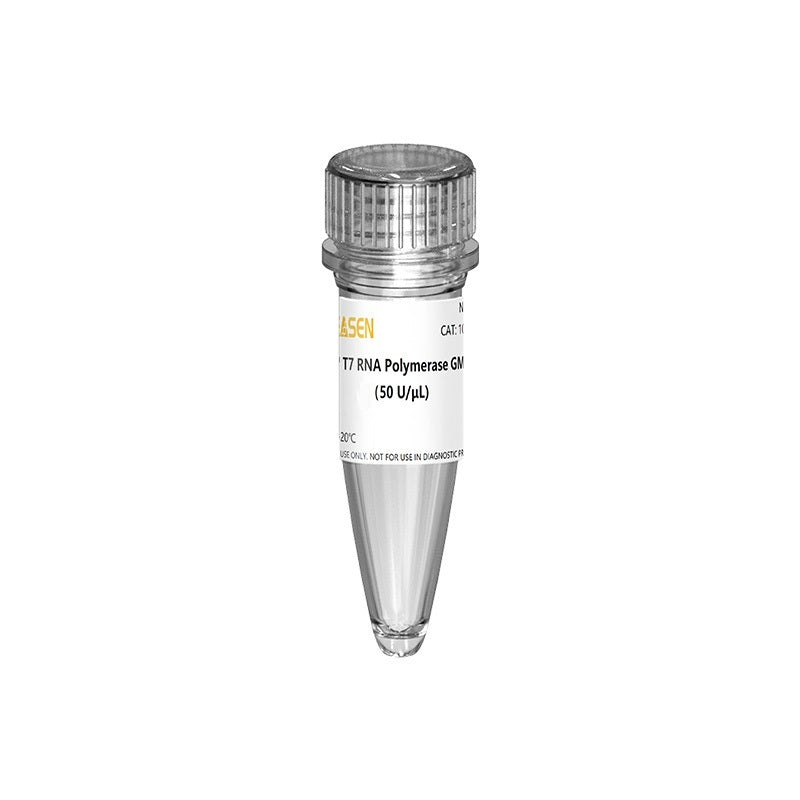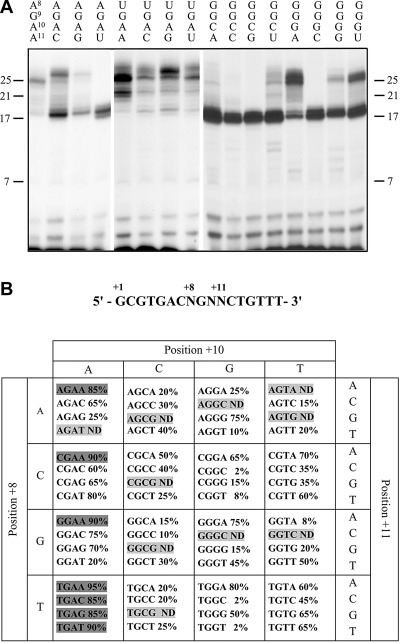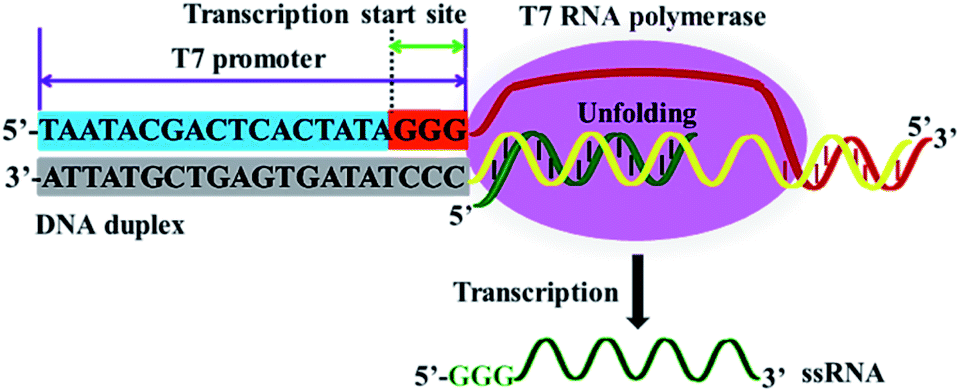The Hi-Yield T7 In Vitro Transcription Reagent is a specialized instrument used in the field of molecular biology for in vitro RNA transcription. This substance exploits the T7 RNA polymerase enzyme to precisely and efficiently produce high quantities of RNA from DNA templates. The precision of this reagent is particularly beneficial in areas where RNA synthesis is monitored and reproducible, such as genetic studies, RNA labeling, RNA-protein interaction assays, as well as the development of RNA therapeutics. The Hi-Yield T7 In Vitro Transcription Reagent provides researchers with the ability to exert precise control over the transcription process, resulting in consistently high-quality RNA production for various experiments.

High-Yield T7 In Vitro Transcription Reagent: Exposing the Power of Single Nucleotide Modifications
RNA research is always evolving, and experts are now diving deeper into the intricacies of RNA structure and function. Hi-Yield T7 In Vitro Transcription Reagent stands as a key player in this exciting scene, providing researchers with a powerful tool to study the influence of single nucleotide modifications on RNA behavior.
What is Hi-Yield T7 in vitro transcription reagent?
In addition to traditional high-efficiency T7 RNA transcription kits, Hi-Yield T7 In Vitro Transcription Reagent focuses on a single component: a nucleoside triphosphate (NTP) modification called N1-Methyl-pseudouridine triphosphate (N1-Me-pUTP) . This unique NTP modification plays a crucial role in improving the stability and functionality of the RNA.
The power of N1-Me-pUTP:
Normal RNA transcripts can be degraded by enzymes called RNases. N1-Me-pUTP makes a slight modification to the position of uridine inside the RNA molecule. Thanks to this modification, a methyl group is introduced, which acts as a protection against RNase attack, which improves the stability and lifespan of the RNA produced.
The benefits of Hi-Yield T7 in vitro transcription reagent:
RNA Stability significantly improves with the incorporation of N1-Me-pUTP, allowing extended storage and handling time without risk of degradation.
Functional Studies:
The subtle modifications made by N1-Me-pUTP are often similar to natural modifications present in functional RNAs. This allows researchers to analyze the influence of these modifications on interactions between RNA and protein, enzymatic activity and cellular activities.
Adaptation and Compatibility:
The High-Yield T7 In Vitro Transcription Reagent can be seamlessly integrated into existing T7 RNA transcription kits. Just replaces part of the UTP standard with N1-Me-pUTP in order to achieve the desired level of modification.
Applications of Hi-Yield T7 in vitro transcription reagent:
By integrating N1-Me-pUTP into small interfering RNA (siRNA) molecules, researchers can improve their stability and effectiveness within the cell, leading to greater efficiency in gene silencing.
Aptamer Formation:
Aptamers are RNA or DNA oligonucleotides that bind to specific targets. N1-Me-pUTP modification can improve the stability and affinity of aptamers, making them valuable tools for diagnostics and targeted therapies.
Enzyme Engineering:
Ribozymes are RNA molecules that possess enzymatic activity. Incorporation of N1-Me-pUTP can improve the stability and catalytic activity of artificial ribozymes, which opens new prospects in the field of biotechnology.
Conclusion:
Hi-Yield T7 In Vitro Transcription Reagent provides a valuable tool for RNA researchers. By enabling the incorporation of N1-Me-pUTP, researchers can access a new level of control over RNA stability and function, opening up avenues for groundbreaking discoveries in the field of RNA biology and its potential therapeutic applications.
High Yield T7 RNA Transcription Kits: Powerhouse Tools for RNA Production
The Hi-Yield T7 In Vitro Transcription Reagent is a valuable tool for RNA researchers. By allowing for the incorporation of N1-Me-pUTP, researchers can access a new level of control over RNA stability and function, opening up avenues for fundamental discoveries in RNA biology and potential therapeutic applications.
What are Hi-Yield T7 Transcription Kits?
These kits are meticulously engineered to provide researchers with a robust and efficient system to produce high amounts of RNA in vitro (outside of a living cell). The core component of these kits is the T7 RNA Polymerase, a powerful enzyme renowned for its ability to rapidly and efficiently produce RNA.
How do they work?
When you combine your DNA template harboring a T7 promoter sequence with the pre-optimized reaction mix included in the kit, the magic takes place. Typically, this mix includes:
T7 RNA Polymerase: The maestro of the show, responsible for faithfully converting your DNA template into RNA.
NTPs (Nucleotides): The building blocks of RNA, provided in ample quantities to fuel transcription. Reaction Buffer: A specially formulated solution that creates the optimal environment for T7 RNA Polymerase to work its magic.
RNase Inhibitor: An invisible guardian, protecting your precious RNA from unwanted degradation by RNases (enzymes that can break down RNA).
Additional Enzymes : Depending on the kit, additional enzymes may be included to remove unwanted DNA from your final RNA product.
The reaction itself is a breeze. Simply follow the manufacturer's instructions, mix the components, and incubate. Within a designated timeframe, typically ranging from 30 minutes to 2 hours, the T7 RNA Polymerase swings into action, churning out the desired RNA molecule.
Advantages of High Yield T7 RNA Transcription Kits:
- High Yields: As the name suggests, these kits are designed to deliver substantial quantities of RNA, often exceeding 100 micrograms per reaction.
- Speed and Efficiency: The optimized reaction conditions and potent T7 RNA Polymerase ensure rapid and efficient RNA synthesis, saving you valuable time.
- Ease of Use: The kits come with pre-measured components and clear instructions, making them user-friendly even for beginners.
- Scalability: Many kits allow for scaling reaction volumes to meet your specific RNA needs.
- Versatility: These kits are compatible with a wide range of DNA templates and can be used to incorporate modified nucleotides for labeling or functional studies.
In Conclusion:
High Yield T7 RNA Transcription Kits are invaluable tools for researchers working with RNA. Their ability to deliver large quantities of RNA efficiently and conveniently streamlines various RNA-based experiments. So, if you're looking to unlock the potential of RNA in your research, consider incorporating a High Yield T7 RNA Transcription Kit into your workflow.
Hi-Yield T7 In Vitro Transcription Reagent: Product Components & Selection Guide
| Component | Description | Selection Considerations |
|---|---|---|
| Hi-Yield T7 In Vitro Transcription Reagent | Contains a highly purified and concentrated solution of N1-Methyl-pseudouridine triphosphate (N1-Me-pUTP). | - Desired RNA Stability: For applications requiring enhanced RNA stability (e.g., RNAi, aptamers), Hi-Yield T7 In Vitro Transcription Reagent is ideal. - Compatibility: Ensure compatibility with your existing High Yield T7 RNA Transcription Kit. |
Selection Guide
| Application | Recommended Usage |
|---|---|
| Standard in vitro transcription | Not recommended |
| RNAi studies | Partial or complete substitution of UTP with N1-Me-pUTP (e.g., 25% - 100% replacement) |
| Aptamer development | Partial or complete substitution of UTP with N1-Me-pUTP (titration recommended to optimize stability and function) |
| Ribozyme engineering | Partial substitution of UTP with N1-Me-pUTP (optimize based on desired catalytic activity) |
High Yield T7 RNA Transcription Kits are specially designed tools for in vitro transcription of RNA molecules using a T7 RNA polymerase promoter. These kits are highly valuable in the fields of molecular biology and genetic engineering as they can serve various purposes, such as isolating large quantities of RNA for gene expression studies, RNA interference experiments, and RNA vaccine production.
Key Benefits of High Quality T7 RNA Transcription Kits:
In terms of efficiency, they make it possible to generate high levels of RNA, which is essential for experiments requiring a large quantity of transcripts.
Fidelity:
The transcription process maintains high fidelity, ensuring that the generated RNA faithfully reflects the initial DNA template.
Flexible:
These kits can be used to transcribe different lengths of RNA, ranging from small oligonucleotides to long mRNA sequences, making them suitable for various research needs.
Convenience:
Kits include all the essentials, such as T7 RNA polymerase, spare buffers and combination ribonucleotides (NTPs), which simplifies transcription.
The transcription process can be completed in just a few hours, allowing RNA products to be produced quickly.
It is possible for users to customize reaction conditions by adding modified nucleotides or optimizing their yield and purity for specific applications.
Applications:
- Gene Expression Studies: Synthesizing RNA transcripts to study gene function and regulation.
- RNA Interference (RNAi) Experiments: Producing siRNA or miRNA precursors for gene silencing studies.
- Vaccine Development: Generating mRNA for use in RNA-based vaccine formulations.
- Protein Synthesis: In vitro translation of mRNA into protein for functional and structural studies.
How It Works:
The process begins with a DNA template that contains a T7 promoter sequence upstream of the gene of interest. Once the DNA template is prepared, it is added to the transcription mix containing the T7 RNA polymerase and ribonucleotides. The T7 RNA polymerase binds to the promoter region and initiates RNA synthesis, transcribing the downstream DNA sequence into RNA. The reaction proceeds at a controlled temperature, usually around 37°C, for a specified period, resulting in the production of high-yield RNA transcripts.
Conclusion:
High Yield T7 RNA Transcription Kits represent a powerful tool in molecular biology, offering the ability to rapidly produce large quantities of RNA. Their ease of use, efficiency, and versatility make them indispensable for researchers working in gene expression, RNA interference, and other areas of genetic research.



